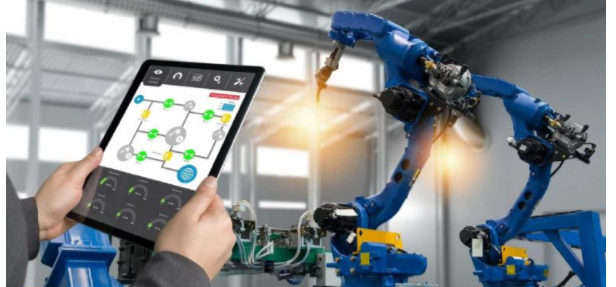The Industrial Internet of Things (IIoT) has many benefits for industrial companies, bringing valuable business insights, efficiency and productivity. But as companies begin to adopt the IIoT strategy, the costs surrounding these implementations introduce new problems, especially where to use them. The answer is that cloud computing and edge computing are indispensable for a successful IIoT framework, but the cost and return on investment will determine its individual role.
According to reports, cloud computing is generally considered to be the backbone of IIoT. Sending data to the cloud is a popular and correct move for most companies. Devices with built-in sensors transmit data to the cloud, which is then analyzed by the cloud machine learning engine to produce actionable insights. These insights allow companies to streamline production, improve quality, and optimize maintenance.
However, companies may encounter problems when they fully implement IIoT. When using analytics and wireless networking in the cloud, costs can increase rapidly. The essence of the cloud model is pay-per-use, which means that costs will change over time. Some methods can alleviate this situation, including moving to more operating expenditure (OPEX) models.

Another approach is to introduce edge operations using internal infrastructure and gateways. As companies continue to push their IIoT strategy and begin to make progress, they will realize that the cloud infrastructure is only part of the IIoT side program.
Operators have found that certain processes cannot be pushed to the cloud when it comes to real-time computing needs. Due to cost and latency issues, they began to push more and more operations to the edge of the network. This also helps to address another challenge faced by automation industry operators, namely the continuing threat of cybersecurity.
Transferring data outside the factory is one of the biggest challenges in the field of industrial automation. The edge computing platform acts as a local storage point for multiple sensors, enabling more real-time feedback analysis and performing pre-processing, so only the necessary data needs to be sent to the cloud. This hybrid approach also reduces the number of attack surfaces if the data is collected from multiple sensor points.
The edge system supports a wide range of applications, including small-scale, localized monitoring and data capture (SCADA), human-machine interfaces, historical databases and thin clients, and is available at competitive prices. The data they collect can be used for real-time analysis on the shop floor to improve operations, including advanced process control, quality checks, and predictive equipment failures. Edge devices can also upload certain information to the control system and use the cloud for asset performance management, post-processing analysis, or planning.
In fact, finding the right balance between the edge and the cloud will be the key to the success of the IIoT framework. By using the right tools, companies will also see valuable return on investment. Companies must understand that data is a key resource in the implementation of IIoT. Data gaps can have a negative impact on local and cloud analytics. To ensure that data is adequately protected from the perspective of collection, storage, maintenance, and security, it must be evaluated from the perspective of manpower and risk in return on investment operations.
For example, when companies determine the best tools for IIoT, they need to consider that as computing power and applications approach the factory floor, there will be a shortage of professionals who can solve problems. This means that the system is easy to install and easy to maintain by localized operations technicians, as these new edge environments are mostly outside of IT support.
China 433/868/915MHz Antenna,High gain 433/868/915MHz Antenna.Factory Price 433/868/915MHz Antenna
433MHz Antenna,868MHz Antenna,915MHz Antenna
Yetnorson Antenna Co., Ltd. , https://www.yetnorson.com
![<?echo $_SERVER['SERVER_NAME'];?>](/template/twentyseventeen/skin/images/header.jpg)